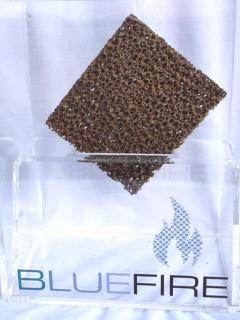
The consumer determines which clean technology will prevail on the market
(Saterland-Ramsloh, 26.10.20 )
Ever since man has existed on this planet, he has striven for progress.
In the course of human development many inventions and developments have been made.
In the more recent epochs, industrialization was pushed forward in order to generate profits and to replace work with machines, thus making it easier for man.
Only in the last century was technology designed in such a way that it is beneficial to man and keeps him healthy or does not harm him.
Humans should use the technology available to them in such a way that their environment and this planet will remain livable for a long time to come.
The environmentally compatible design of technology is our task, which we must master now, in order to leave a livable earth to future generations.
It is our duty to apply and use the best available technology to develop technically advanced and environmentally friendly products.
The use of the best available technology for industrial emissions was laid down in the EU Directive 2010/75/EU of 24.11.2011. This industrial emissions directive has been in force since 06.01.2011.
According to Art. 11 of the IE-Directive, all appropriate precautionary measures against environmental pollution must be taken during the operation of installations for the pursuit of activities listed in Annex I of the IE-Directive and the Best Available Technique (BAT) must be applied.
In order to avoid or reduce emissions from industry, the best available technology shall be applied. This must spur us all on, also as end users. We should make sure that we only purchase products that use the current best available technology to avoid or reduce emissions. Only those products that exploit the full potential of the available technology can ensure that we can continue to protect our environment in the future.
If this perspective is applied to single room firing systems, such as stoves and fireplace inserts, the best available technology for emission reduction should also be used here.
There are many different models of such furnaces and in all conceivable forms and applications. All single room furnaces always have a combustion chamber in which the wood or fuel burns and a flue gas outlet through which the exhaust gases are extracted from the combustion chamber.
Catalysts are the best available technology for reducing emissions from single room firing systems. In a similar way, we already know the use of catalytic converters from the automotive industry. These catalysts are integrated directly into the combustion chamber in the upper part of the combustion chamber. The catalysts can convert up to 75% of the carbon monoxide emissions into CO2. This process does not produce more CO2 than the fuel wood has absorbed during its growth. The catalysts are oxidation catalysts, which means that they use the oxygen in the combustion air to cause CO molecules to react to CO2.
The exhaust gases need a catalyst for this process, since very high temperatures are required for this reaction. In a normal furnace, only directly above the tip of the flame is it hot enough for CO to react with the oxygen in the combustion air to form CO2. When the flue gases then move further in the furnace towards the flue pipe and chimney, they have already cooled down too far to react with the oxygen again. This is exactly where the catalytic converter helps. It offers the exhaust gas a second possibility to react with oxygen. This is possible because the contact of the exhaust gas with the catalytically active surface reduces the activation energy and enables CO to react with oxygen to form CO2.
Basically, this technology has been known and mastered for years. Unregulated catalytic converters in cars have worked in the same way. However, the special feature of catalysts for wood combustion is that the temperature level at which these catalysts work and also the composition of the catalytically active mass has been precisely matched to the components of wood exhaust gases. This development is a very simple way to transfer a mastered technology to a new application.
Every end user is invited to inform himself and ask for the best available technology when purchasing a new single room furnace.
There are now numerous manufacturers of single room firing systems that use this catalyst technology and have integrated it into the combustion chambers of the newly developed firing systems.
The consumer does not take any risk when purchasing the best available technology for single room firing systems.The catalyst technology is well mastered and familiar from automotive applications. The specialists at Blue Fire GmbH have transferred this technology to the application in exhaust gases from wood emissions. Since 2015, Blue Fire catalysts have already been used without problems in wood-burning stoves, sauna ovens, fireplace inserts and heating cassettes.
Make the right decision for the future and protect our environment by purchasing the best available technology.
Please contact the manufacturers of wood-burning systems or Blue Fire GmbH for further information on this topic.
